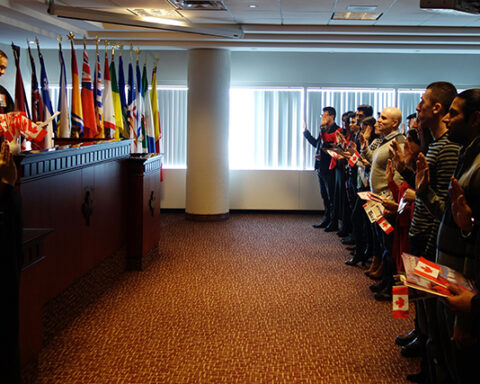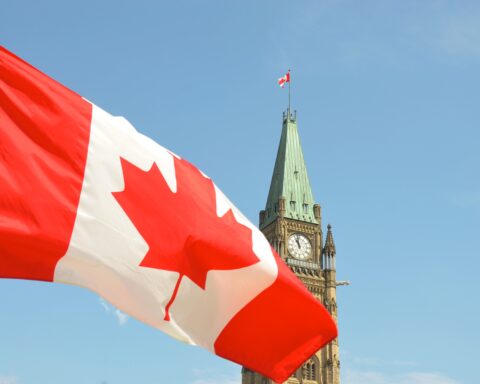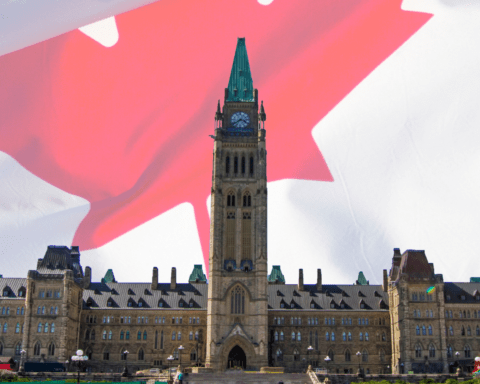Days after being sworn in as prime minister on November 4 last year, Justin Trudeau listed priority tasks for his ministers.
Like that of his colleagues, the list for John McCallum, Minister of Immigration, Refugees and Citizenship, drew much from the Liberal party’s election promises.
While resettling Syrian refugees was the number one priority, McCallum was told that his overarching goal was “to reopen Canada’s doors to welcome those who want to contribute to its success.”
The wording was clever. While it tried to highlight the previous Conservative government’s reluctance to open Canada’s door to refugees, it retained the essence of what the country’s need for immigrants has always been: It’s the economy, stupid.
And, McCallum has stuck to the time-tested script. Tabling this year’s report on immigration targets in parliament, he said the government is boosting the base number of immigrants to be admitted next year to 300,000. The previous annual targets from 2011 to 2015 was 260,000, but it swelled to 300,000 this year on account of the Syrian arrivals. The last time this base figure was reached was way back in 1913.
Attempting to give this annual setting of targets a more long-term view, the minister told reporters that it “lays the foundation for future growth.” What was unsaid is that last year’s election rhetoric for letting in more refugees was a one-off political gesture meant to to induce a feel-good across the country and reinforce the “Canada is back” mantra.
Although the 2017 intake targets includes 40,000 refugees and protected persons, it is down from nearly 56,000 this year. Also slightly down is the number of people who would be let in on humanitarian or compassionate grounds: 3,500 against this year’s 3,600.
And when it comes to government-assisted refugees, the numbers are far lower. The number for 2017 is 7,500, down from nearly 20,000 admitted so far this year, and still fewer than the nearly 10,000 admitted in 2015.
Like the previous government, the targets focus on boosting entries for those in the “economic” class. It has been increased to 172,500 from 160,600. In the family class, the number of sponsored spouses, partners, children, parents and grandparents will climb to 84,000 from 80,000.
Signalling left, turning right
While people in the settlement sector would bemoan the cuts to refugee intake given the continuing crises around the world, others would call it pragmatism. Those less charitable to the Liberals would say they are back at their game of signalling left, turning right.
The Liberals know that Canadians will not continue to be supportive of refugee resettlement. Reports about the government being caught off guard by the large number of children each Syrian family had in tow would cast doubts about the whole manner of bringing them in, starting from the vetting process.
Keeping both public perceptions and capacity constraints in mind, the government has astutely kept in abeyance its own economic growth council’s recommendation to raise annual immigration levels to 450,000 over the next five years.
However, it is doubling down on bringing in economic immigrants. Early on, Ottawa indicated that it would be more positively inclined towards international students becoming permanent residents, with McCallum terming them as “the perfect immigrants.”
The Express Entry immigration selection system, the key change to the economic immigration stream made by the previous government, is now being seen as a tool to also promote family reunification. The idea is to give candidates with family members already in Canada additional points.
Discounting citizenship
The unsettling thing about the emphasis on immigration levels is the indifferent attitude towards the very feature that makes our system unique: one of the shortest paths to citizenship, that over 80 per cent of immigrants eagerly choose to take. At least until recently.
The number of citizenship applicants has plummeted for the second year in a row after the more than a doubling in the application fee from $300 to $630. For a while it was $200, after being at $100 for a long time.
Evidently, citizenship applications are down. Only 36,000 citizenship applications were received from January to June this year, a little more than one-third of the number for the same period last year, according to data obtained for policy analysis by Andrew Griffith, a retired immigration department director-general. In 2015, a total of 130,000 applications were submitted compared to an average of 200,000 in the previous years.
While $630 itself is a hefty sum, the actual cost incurred could be much more if one includes the fee (around $200) for a language proficiency test that many applicants would need to take, and further for the Canadian passport (minimum $120). And, in the case of persons from source countries like India that do not allow for dual citizenship, the expenses add up. The fee to process the giving up of Indian citizenship and obtaining a new visa would take the costs to well over $1,500.
Self-defeating
Imagine a family of four needing to spend $6,000 when struggling economically to put roots in a new country. No one is suggesting that citizenship should come cheap, but forcing those on the cusp of becoming citizens to bear the whole cost of the process is rather unfair. Especially when the government is ready to waive or subsidize fees for refugees. How much more do new Canadians need to do to become citizens of a country they cheerily chose?
More importantly, isn’t ultimate citizenship the whole point of welcoming new immigrants in the first place?
Whereas the Liberals were critical of all the changes to immigration rules made by the Harper government, they were coy about reviewing the citizenship fee during the election campaign. Now that they hold the reins and are reviewing Bill C6 to amend the Citizenship Act, there is still no mention of any adjustment to the fee.
While tax-paying permanent residents are already an underclass unable to vote even in local elections, this disenfranchisement is now set to grow and become a permanent feature of our polity. It calls into question our own understanding of democracy and surely not something we should be proud of.
The views, opinions and positions expressed by all NCM columnists and contributors are the author’s alone. They do not inherently or expressly reflect the views, opinions and/or positions of New Canadian Media.




